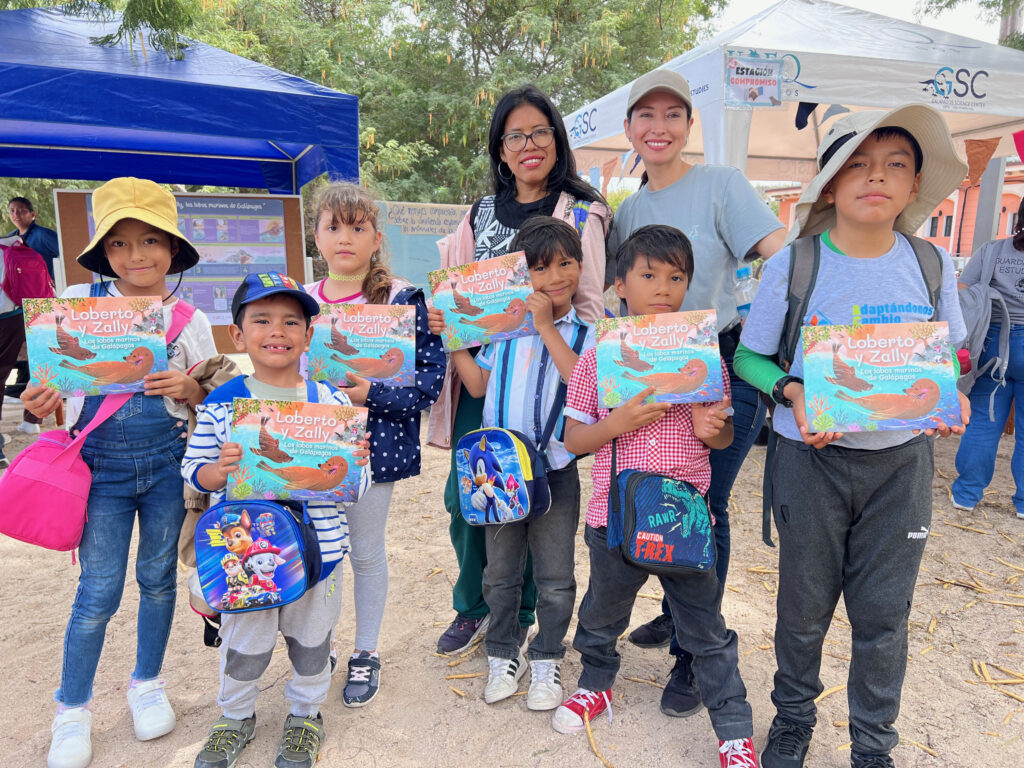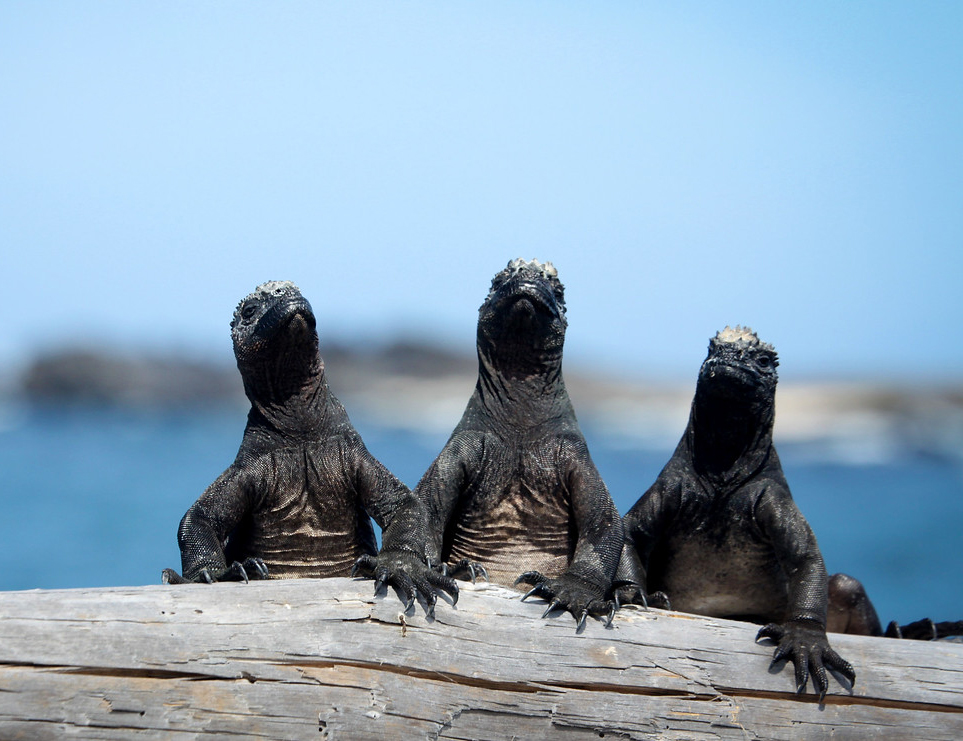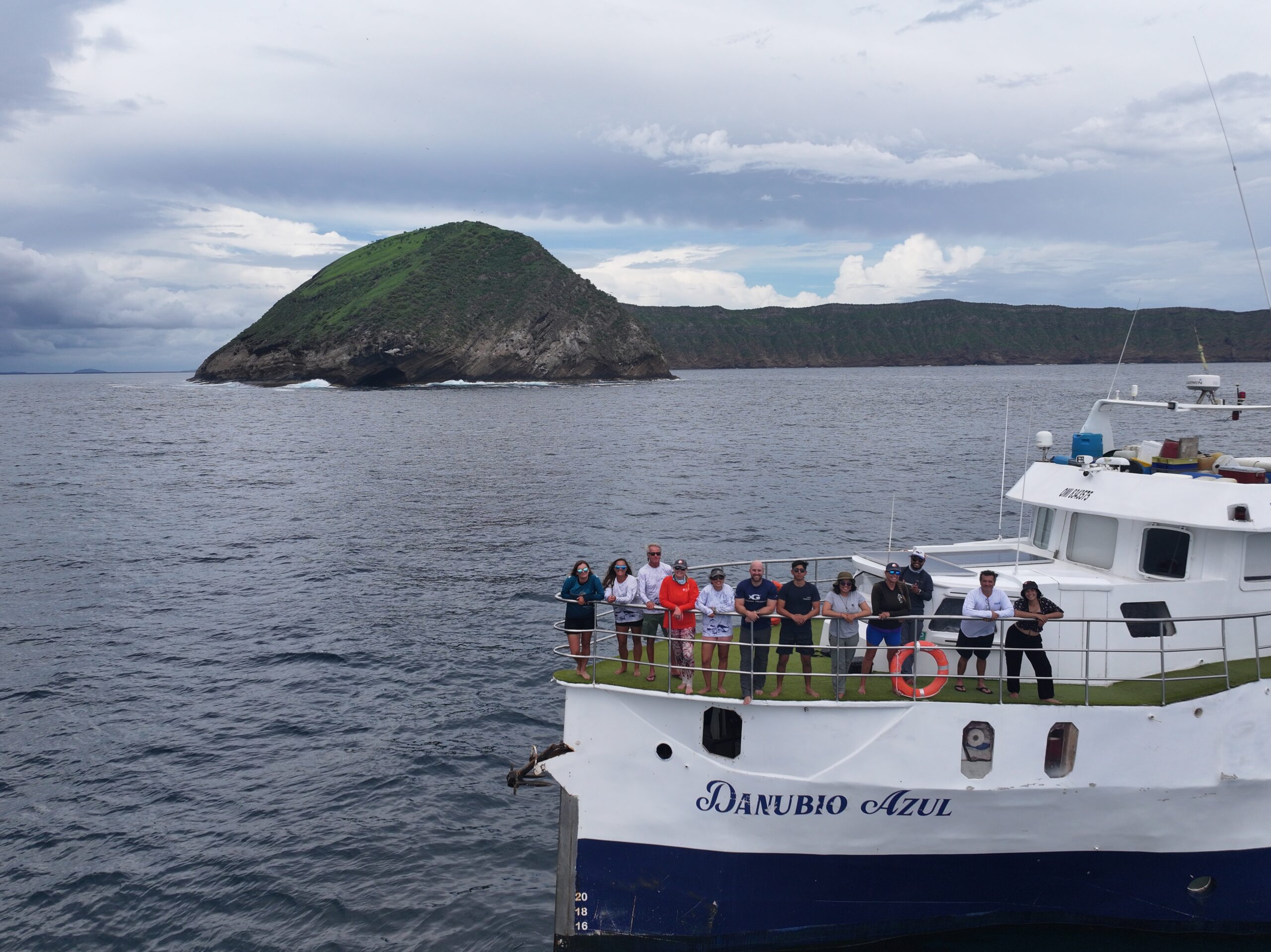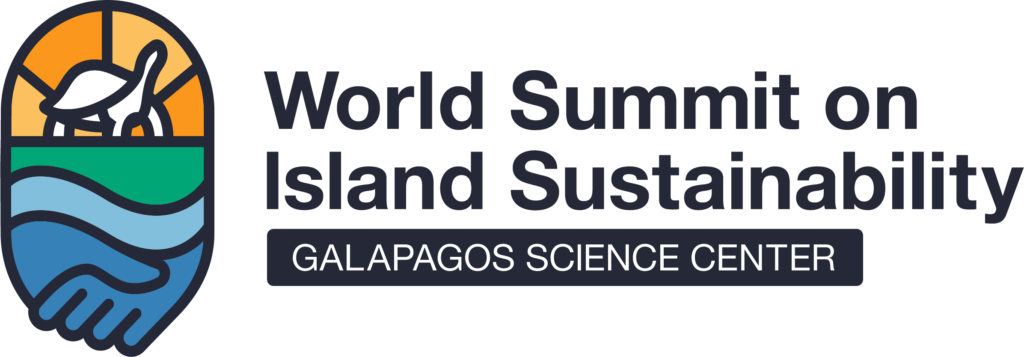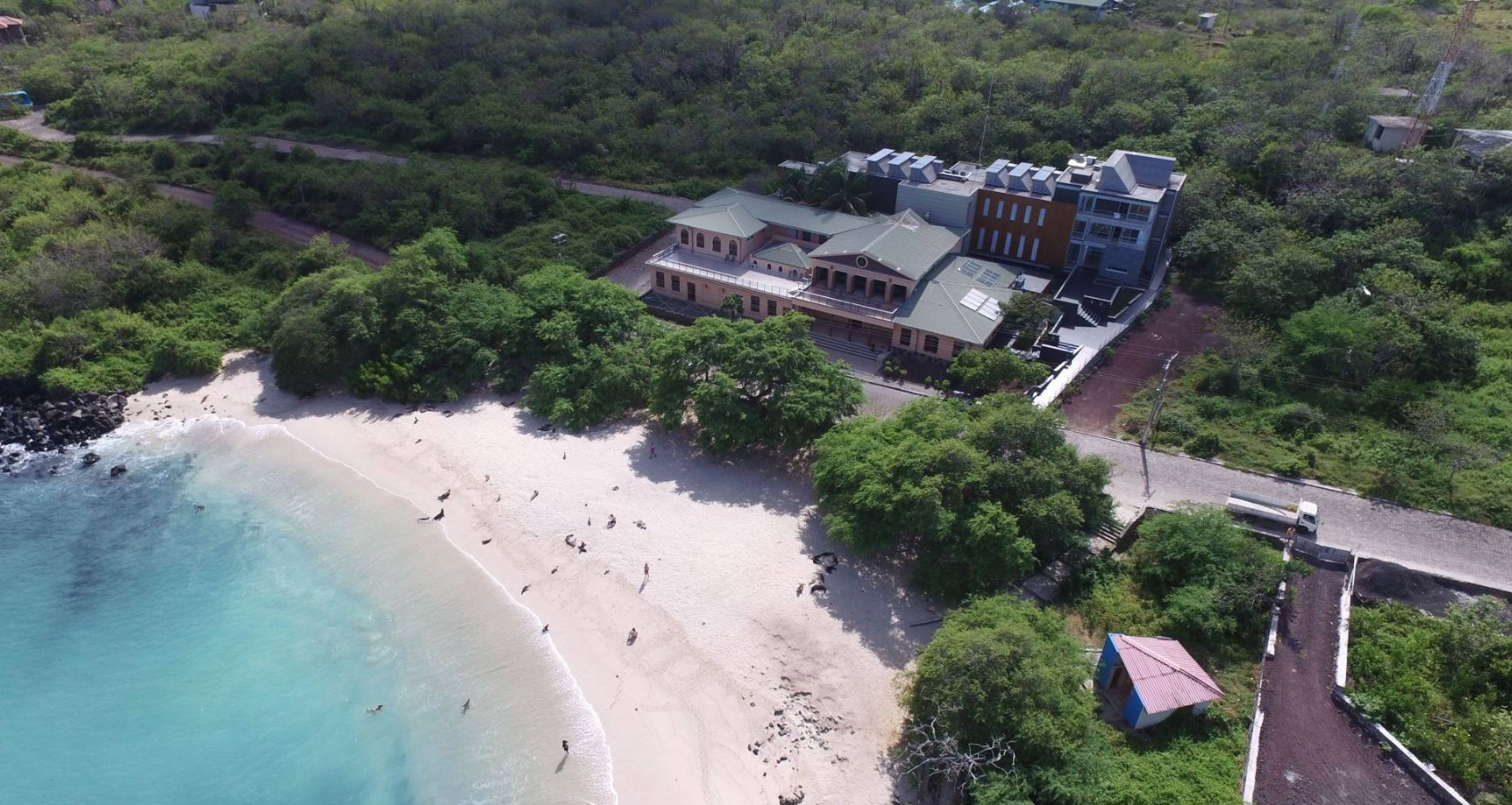With the goal of raising environmental awareness and promoting the conservation of the archipelago’s natural resources, the Galapagos Science Center (GSC) and the Galapagos Conservation Trust have been running the “Connecting with Nature Program” (CWNP) since 2019. This initiative has reached over 9,100 community members on San Cristóbal Island, through recreational and educational activities tailored to children, youth, and adults.
A Model Based on the Theory of Change
CWNP is grounded in the Theory of Change, which aims to generate a progressive and lasting shift in attitudes and behaviors toward environmental conservation. Through age-appropriate interventions, the program fosters awareness, engagement, action, and empowerment on important themes such as sustainable development, climate change, identity, and gender equity.
From its inception through the end of Phase VI, the program has engaged various community groups, reaching more than 9,100 people through community development activities.
Participation Overview (Phases I–VI)
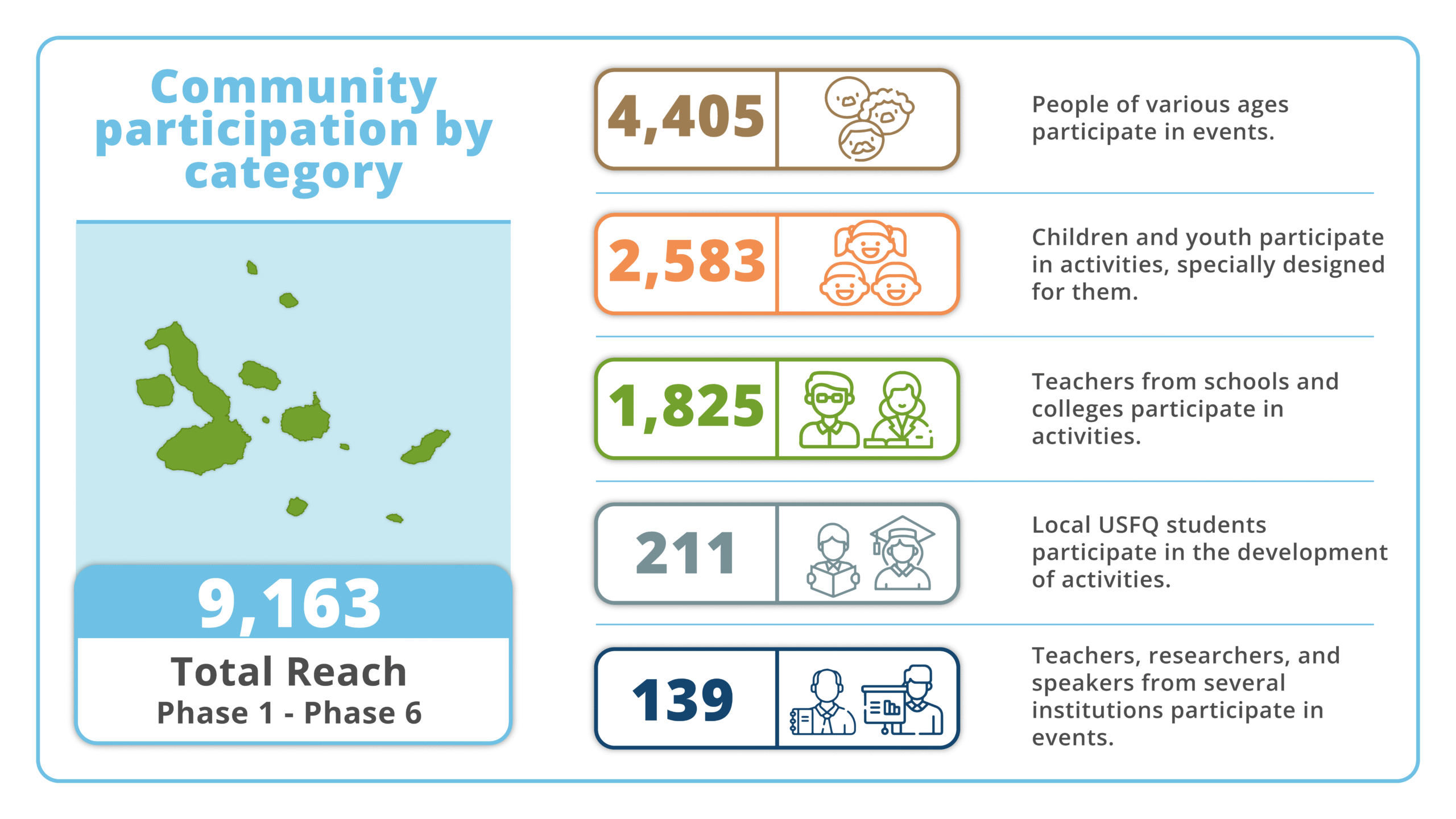
Strategies That Helped Expand Our Reach in Phase VI
Storytelling Sessions and Virtual Classroom
Through science-based children’s books like “Marti the Hammerhead Shark” and “Tessa the Galápagos Giant Tortoise”, children explored the importance of conservation. This year, two new titles “Alberto the Waved Albatross” and “Loberto and Zally, the Galápagos Sea Lions”, will be added to the curriculum. A digital “Virtual Classroom” provides access to educational resources beyond the islands.
Access our Virtual Classroom here.
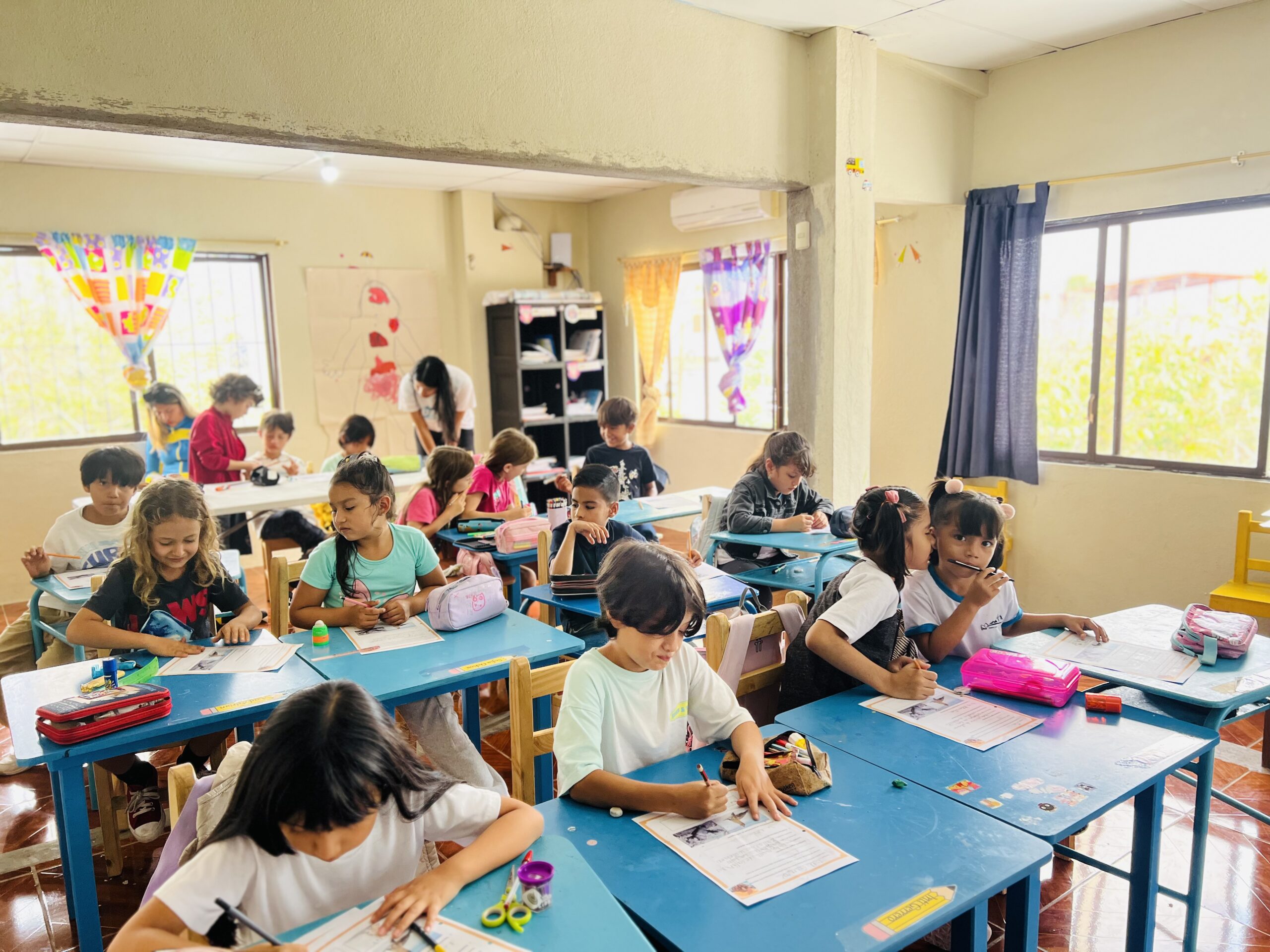
“Stories to Protect” Workshops
Creative spaces where participants developed artistic skills while reflecting on environmental heritage. These activities took place in Santa Cruz Island, including locations such as the Biblioteca Comunitaria para Galápagos y el Mundo, beaches, town squares, and community fairs.
Science Friends Club
A hands-on learning experience that inspires scientific curiosity among children and teens by introducing them to research methods used by scientists.
“My favorite club activity was during the first session, when we did experiments in the Galapagos Science Center lab. We made lava lamps and used microscopes to observe bacteria and other things!” — Fabiana Mata, student at Unidad Educativa Liceo Naval Galápagos.
Family Science Events
Interactive events held in parks, beaches, and plazas where the community engages with GSC researchers. These “science station” setups include games, challenges, presentations, and learning commitments, promoting fun and meaningful experiences.
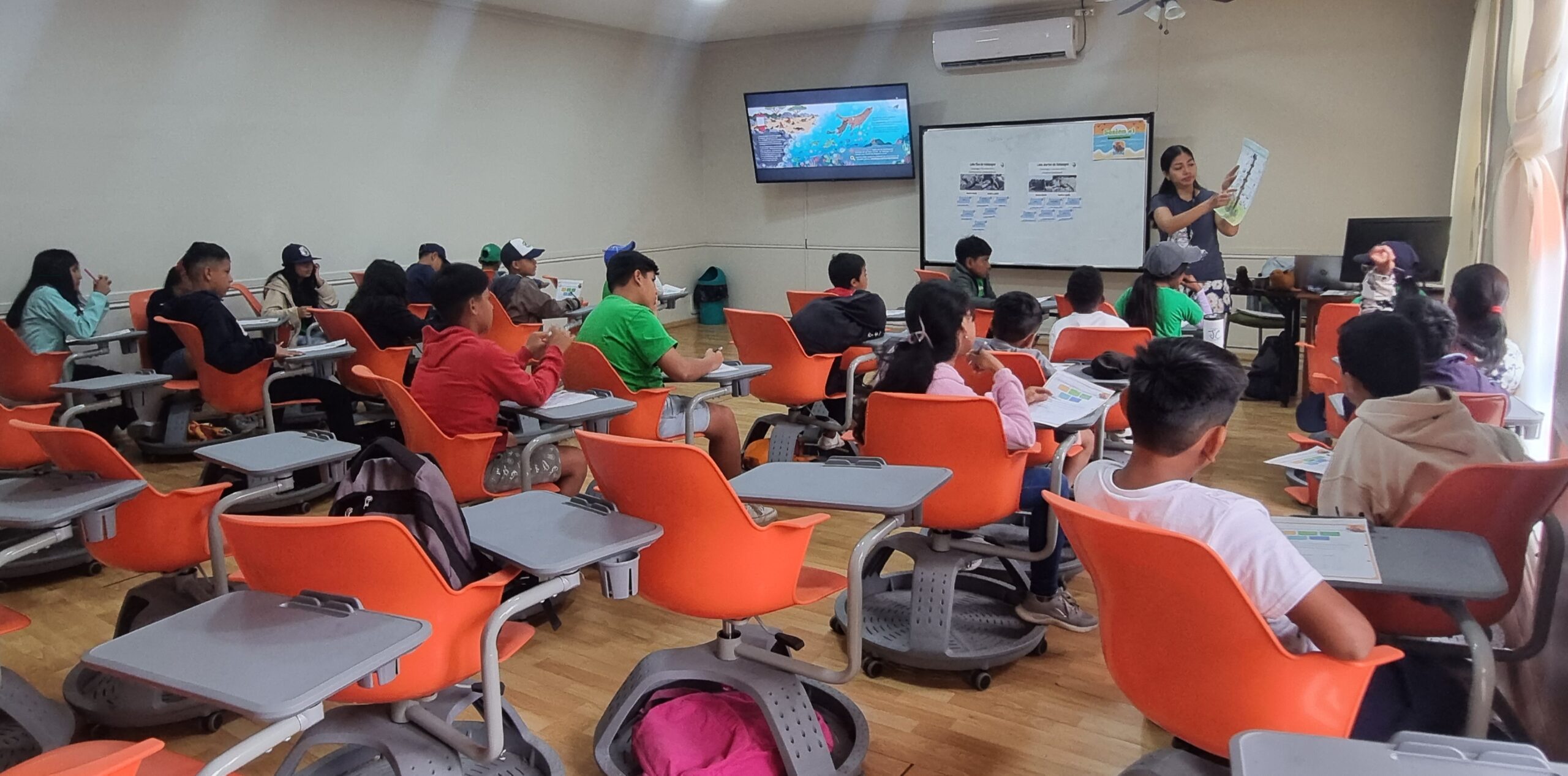
Shark Day
Educational and fun event held annually for over a decade, raising awareness of the importance of shark conservation and the threats they face in marine ecosystems.
Dragons in Action
An initiative where USFQ Galápagos students apply their academic knowledge to environmental education and conservation efforts.
“I joined this internship because I believe it’s essential to share knowledge with children and the local community. Environmental education plays a key role in reducing human impact. Living in San Cristóbal, surrounded by unique flora and fauna, comes with the responsibility to protect it.” — Matías Bonilla, first-year Environmental Management student, USFQ Galápagos.
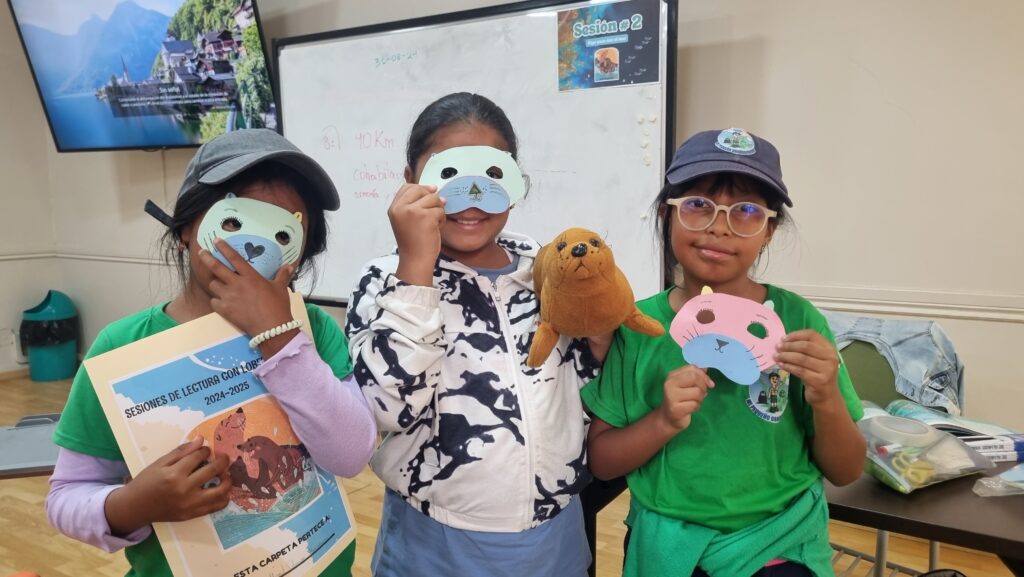
Looking Toward a Sustainable Future
The success of PCCN has sparked interest in expanding its impact to mainland Ecuador and the Eastern Tropical Pacific Marine Corridor. With support from researchers, educators, and strategic allies, the program continues to strengthen its commitment to education and conservation in the Galápagos.
“We believe these interventions positively impact the local community and support the sustainable development of Galápagos. Every activity highlights the relationship between people, animals, and the environment, promoting a healthier interaction that protects ecosystems more effectively. We encourage everyone to stay informed and take action to reduce socio-environmental conflicts.” — Leidy Apolo, PCCN Coordinator
For more information and ways to get involved, visit https://www.galapagosscience.org/ and follow us on social media @galapagosgsc.

